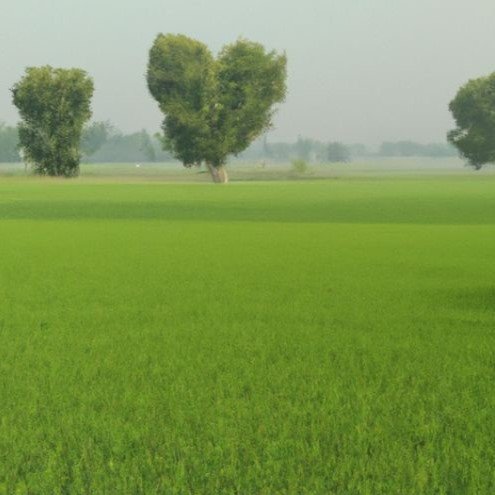Inflation refers to the sustained increase in the general price level of goods and services within an economy over time. This rise in prices is influenced by various factors such as demand-supply imbalances, global economic conditions, and geopolitical events. For instance, the Russia-Ukraine war, disruptions in global supply chains, overloaded ports, logistical issues, and strong merchandise demand have all intensified inflationary pressures globally. Specifically, in 2022, many countries experienced significant increases in inflation rates. The United States and the United Kingdom faced their worst inflation in decades, with the US reaching 9.1 percent in June 2022 and the UK hitting 11.1 percent in October 2022. Other countries, such as Iran (53.4 percent in February 2023), Turkey (43.7 percent in April 2023), Egypt (30.6 percent in April 2023), and Argentina (109 percent in April 2023), also recorded high inflation rates. In Pakistan, food inflation is a pertinent issue, especially considering its status as a net importer of food and petroleum products. The surge in crude oil prices, triggered by global crises, has led to double-digit inflation since November 2021. Furthermore, the depreciation of the Pakistani Rupee against the US Dollar has further inflated the prices of imported items, including food. For instance, during the current fiscal year, the Pakistani Rupee depreciated by 28.4 percent, from Rs 204.6 in June 2022 to Rs 285.4 in June 1st, 2023, further contributing to inflationary pressures in the domestic market. The impact of these factors is evident in the Consumer Price Index (CPI), which stood at 36.4 percent year-on-year (YoY) basis in April 2023, significantly higher than the 13.4 percent recorded in April 2022.
Pakistan is currently grappling with a severe crisis in its agriculture sector, referred to as the “5 F’s crisis” encompassing food, fuel, fertilizer, feed, and finance. This crisis is marked by a combination of factors including exchange rate depreciation, global commodity price surges, reduced domestic subsidies, and flood-related disruptions. As a result, the purchasing power of low-income households has significantly diminished, posing a threat to poverty alleviation and food security achievements of the past decade. Inflation has soared from 13.4 percent in April 2022 to 36.4 percent in April 2023, with food inflation escalating even further, reaching 46.8 percent in urban areas and 52.2 percent in rural regions. The surge in food prices, evident in the second half of 2022, includes staggering increases in wheat flour (106.7 percent), chicken (43.1 percent), pulse gram (48.4 percent), rice (87.9 percent), milk (36.4 percent), and cooking oil (34.7 percent) prices by April 2023 compared to the previous year. Pakistan’s heightened reliance on imported commodities due to domestic production shortages, coupled with a surge in international commodity prices, has exacerbated the trade deficit. Despite a decrease in international prices in the third quarter of 2022, Pakistan’s currency depreciation and high fuel costs have prevented corresponding relief in domestic markets. Importantly, the country’s current financial crisis has made it increasingly challenging to import essential food commodities and inputs.
The crisis has also affected agricultural production and distribution, with high fuel prices driving up production and transportation costs, and the soaring cost of fertilizer hindering farmers’ access to essential inputs. Additionally, the poultry industry is facing difficulties due to elevated import costs and restrictions on soybean imports. The data provided in the Pakistan economic survey paints a picture of the inflationary landscape in Pakistan during the fiscal year 2022-2023, revealing a significant acceleration in price growth across various sectors of the economy. Headline inflation, as measured by the Consumer Price Index (CPI), surged from 11.0 percent in the previous fiscal year to 28.2 percent during July-April FY2023. This sharp increase indicates widespread inflationary pressures affecting nearly all categories, with the exception of communication services. Transportation costs saw a notable increase, with inflation soaring by 52.8 percent compared to the previous year’s 19.4 percent. This surge is attributed to higher fuel prices, reflecting the global oil price hikes, exchange rate depreciation, and adjustments in energy tariffs. Similarly, housing-related expenses, including water, electricity, gas, and other fuels, rose by 13.6 percent, driven by similar factors.
Food inflation emerged as a significant contributor to overall price increases, particularly driven by perishable food items. Prices for perishables surged by 47.0 percent compared to the previous year’s 4.1 percent, with notable increases in potatoes, onions, and fresh vegetables. Floods in key agricultural regions disrupted production, leading to shortages and subsequent price hikes. Non-perishable food items also recorded a significant increase of 36.4 percent, driven by rising prices of wheat flour, rice, chicken, eggs, edible oil/ghee, and pulses. The analysis further reveals that the surge in national CPI was particularly pronounced in the first quarter of FY2023, jumping to 25.1 percent compared to 8.6 percent in the corresponding quarter of the previous year. This acceleration was primarily attributed to higher perishable food inflation. Overall, the PES data suggests that inflationary pressures in Pakistan during the fiscal year 2022-2023 were broad-based, driven by a combination of domestic and global factors, including catastrophic floods, elevated global food and fuel prices, and currency depreciation.
The conflict between Russia and Ukraine in 2022 sparked global disruptions in markets for key food crops and fertilizers, posing a threat to food security worldwide. Although high international food prices have shown initial signs of adjustment, domestic price levels remain elevated in many low and middle-income countries due to a lag effect. The appreciation of the US dollar and depreciation of currencies in developing countries, including Pakistan, have increased import costs, particularly impacting those heavily reliant on imports. Despite a decline in the international reference price of wheat since October 2022, the cost of purchasing wheat in local currencies has, in some cases, increased during the same period. This discrepancy has led to higher costs for basic food items in poorer import-dependent countries. In the global market, while sugar and rice prices have increased, crude oil, palm oil, soybean oil, wheat, and tea prices have declined compared to April 2022.
The FAO Food Price Index (FFPI), which tracks international prices of globally traded food commodities, rose by 14.3 percent in 2022 compared to the previous year. The index reached record highs for four of its five food sub-indices, driven by factors like ample global supplies, strong competition among exporters, and improved crop conditions in certain regions. International maize, barley, and sorghum prices also experienced declines in April 2023 due to weak global demand and spillover from weakness in maize and wheat markets. The decrease in the vegetable oil price index was attributed to stable palm oil prices and lower quotations for soybean, rapeseed, and sunflower oils. International palm oil prices remained largely unchanged, while sugar prices marked a significant increase, reaching their highest level since October 2011. This rise in sugar prices was driven by tighter global availabilities in the 2022 and 2023 seasons, following downward revisions to production forecasts in key producing countries. Overall, these dynamics highlight the complex interplay of global factors influencing food prices and the challenges posed to both producers and consumers worldwide.
The government’s initiatives to combat food inflation include the allocation of funds for subsidized essential commodities through the Utility Stores Corporation (USC), enhancements to welfare schemes like the Benazir Income Support Program (BISP), and measures to ensure smooth supply and monitor prices of essential items through the National Price Monitoring Committee (NPMC). Additionally, efforts to expand the network of Sasta Bazaars and Utility Store outlets aim to provide a steady supply of daily-use items at affordable prices. The Competition Commission of Pakistan (CCP) is also tasked with controlling cartelization and undue profiteering, while District Price Control Committees monitor prices to ensure availability at reasonable rates. Moreover, the government’s Kissan package aims to boost agriculture post-floods through subsidized loans, subsidies on fertilizers, and support for tractor imports and manufacturing, thus enhancing agricultural production and improving food supply.
The prime objective of the SBP monetary policy is to maintain price stability by keeping inflation rates low. However, the global economy, including Pakistan, has faced significant challenges in achieving this goal post-COVID-19, exacerbated by events like the Russia-Ukraine war. In response to high inflation, central banks worldwide have raised policy rates to curb aggregate demand and alleviate demand-driven inflation. In an effort to contain inflation, the State Bank of Pakistan (SBP) has significantly raised its policy rate from 7 percent in June 2020 to 21 percent in April 2023. However, this tight monetary stance has not effectively curtailed inflation and has resulted in unintended consequences for real economic activity and government expenditure. The co-movement between inflation and interest rates in Pakistan indicates a positive correlation, though causality remains unclear. High interest rates have increased borrowing costs, leading producers to pass on these costs to consumers, thus contributing to inflation. Additionally, high borrowing costs have dampened investment, particularly in the industrial sector, exacerbating supply shortages and keeping inflation rates elevated.
Addressing food inflation, which is a significant component of overall inflation in Pakistan, requires measures beyond monetary policy. Market integration, improved transportation infrastructure, better access to information, and regulation of retailer margins through district price committees can help manage food inflation more effectively. Moreover, Pakistan’s over-reliance on international commodity markets contributes to cost-push inflation, underscoring the importance of addressing domestic supply deficiencies to combat inflation effectively. In conclusion, the government of Pakistan has implemented a comprehensive set of measures to address the challenges posed by food inflation. These initiatives span strategic reserves management, monetary policy adjustments, welfare schemes, market monitoring, and support for agricultural development. While these efforts represent significant steps towards mitigating inflationary pressures and ensuring food security, ongoing vigilance and coordination among government agencies are essential to effectively tackle the complex interplay of domestic and global factors affecting food prices.


